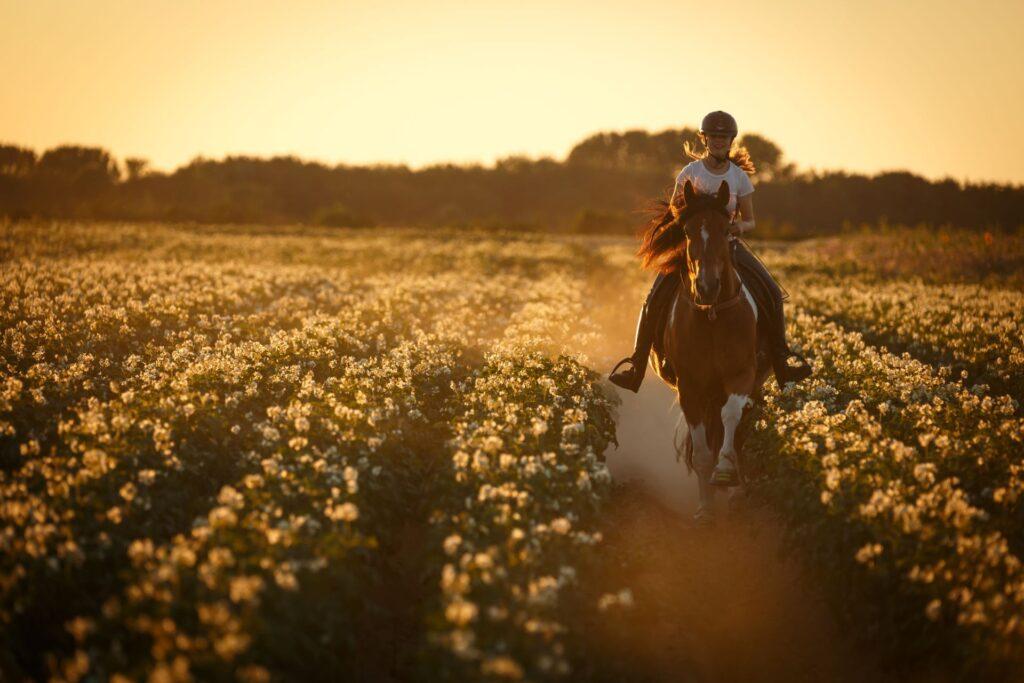Exploring nature offers a profound sense of freedom and connection to the environment, whether you are behind the wheel of an offroad vehicle or riding an equitation horse. Both activities allow adventurers to traverse scenic trails, discover hidden landscapes, and experience the thrill of the outdoors. However, they also share common challenges and require a deep respect for nature and other trail users. This article delves into the parallels between offroad driving and horseback riding, highlights some of the best trails for both, and offers tips on etiquette and safety to ensure a harmonious and enjoyable experience.
The Intersection of Offroad Driving and Horseback Riding
Offroad driving and horseback riding, at first glance, might seem like vastly different pursuits, but they share a surprising number of similarities. Both require a good deal of skill, awareness, and respect for the natural environment. Offroad drivers and equestrians both seek the thrill of navigating rugged terrains and the joy of discovering new paths. The equipment might differ—one relies on horsepower and tires, the other on the grace and power of a horse—but the essence of the adventure is remarkably similar.
In both activities, preparation is key. Offroad drivers must ensure their vehicles are equipped to handle rough terrain, with appropriate tires, suspension, and navigation tools. Similarly, equestrians must ensure their horses are well-trained and fit for trail riding, with suitable tack and gear to handle varying conditions. The camaraderie and trust between driver and vehicle or rider and horse form the backbone of a successful and enjoyable outing.
Scenic Trails for Both Activities
There are numerous trails around the world that cater to both offroad enthusiasts and equestrians, providing stunning landscapes and varied terrains. Here are a few notable examples:
- Moab, Utah: Known for its challenging offroad trails and stunning rock formations, Moab is also home to several equestrian paths that offer breathtaking views and a sense of serenity.
- Big South Fork National River and Recreation Area, Tennessee/Kentucky: This area boasts a mix of offroad trails and equestrian paths, winding through dense forests and along rivers, providing a diverse and picturesque riding experience.
- Ocala National Forest, Florida: With its sandy trails and lush greenery, Ocala offers trails that are perfect for both offroad driving and horseback riding, making it a popular destination for outdoor enthusiasts.
- Death Valley National Park, California/Nevada: While known for its harsh conditions, Death Valley offers unique and challenging trails for offroaders and equestrians alike, showcasing the stark beauty of the desert.
- Shenandoah National Park, Virginia: This park offers a network of trails that cater to both offroad vehicles and horses, winding through the Blue Ridge Mountains and offering stunning vistas.

Trail Etiquette and Safety Tips
Respecting trail etiquette and prioritizing safety are crucial when sharing trails with other users, whether they are hikers, offroad drivers, or equestrians. Here are some essential tips to ensure a harmonious and safe experience:
- Yielding the Right of Way: Offroad vehicles should always yield to horses. Equitation horses can be startled by sudden movements or noises, so it’s important for drivers to slow down, turn off their engines if necessary, and allow riders to pass safely.
- Communication: Equestrians and offroad drivers should communicate clearly and courteously. A simple wave or verbal acknowledgment can go a long way in maintaining a positive trail atmosphere.
- Maintaining Speed: Offroad drivers should keep their speed in check, especially when approaching blind corners or areas where horses might be present. Slow and steady ensures everyone’s safety.
- Leave No Trace: Both activities should adhere to the Leave No Trace principles. Pack out all trash, avoid damaging trails, and respect the natural environment to preserve it for future adventurers.
- Preparedness: Carry essential safety gear, such as first aid kits, maps, and communication devices. Equestrians should ensure their horses are conditioned for the terrain, and drivers should be prepared for potential vehicle issues.
The Joy of Exploring Nature
The true joy of offroad driving and horseback riding lies in the unique perspectives they offer. Riding an equitation horse through a forest trail allows for a slower, more intimate connection with nature, where you can hear the rustle of leaves and the soft clop of hooves on the ground. Conversely, the thrill of navigating an offroad vehicle over rugged terrain provides an adrenaline rush and a sense of conquering the elements.
Both activities foster a deep appreciation for the natural world and offer a reprieve from the hustle and bustle of daily life. Whether you’re experiencing the serene rhythm of a horse’s gait or the rugged power of an offroad vehicle, the sense of freedom and adventure is unparalleled.
Conclusion: Embracing the Outdoors
Exploring nature through offroad driving or horseback riding presents unique challenges and rewards. By understanding the parallels between these activities and respecting trail etiquette, enthusiasts can ensure a safe and enjoyable experience for all. Embracing the outdoors, whether from the seat of a vehicle or the back of an equitation horse, allows for a profound connection with nature and the joy of discovering new horizons.
Picture Credits:
Nadine Haase – stock.adobe.com
matilda553 – stock.adobe.com

